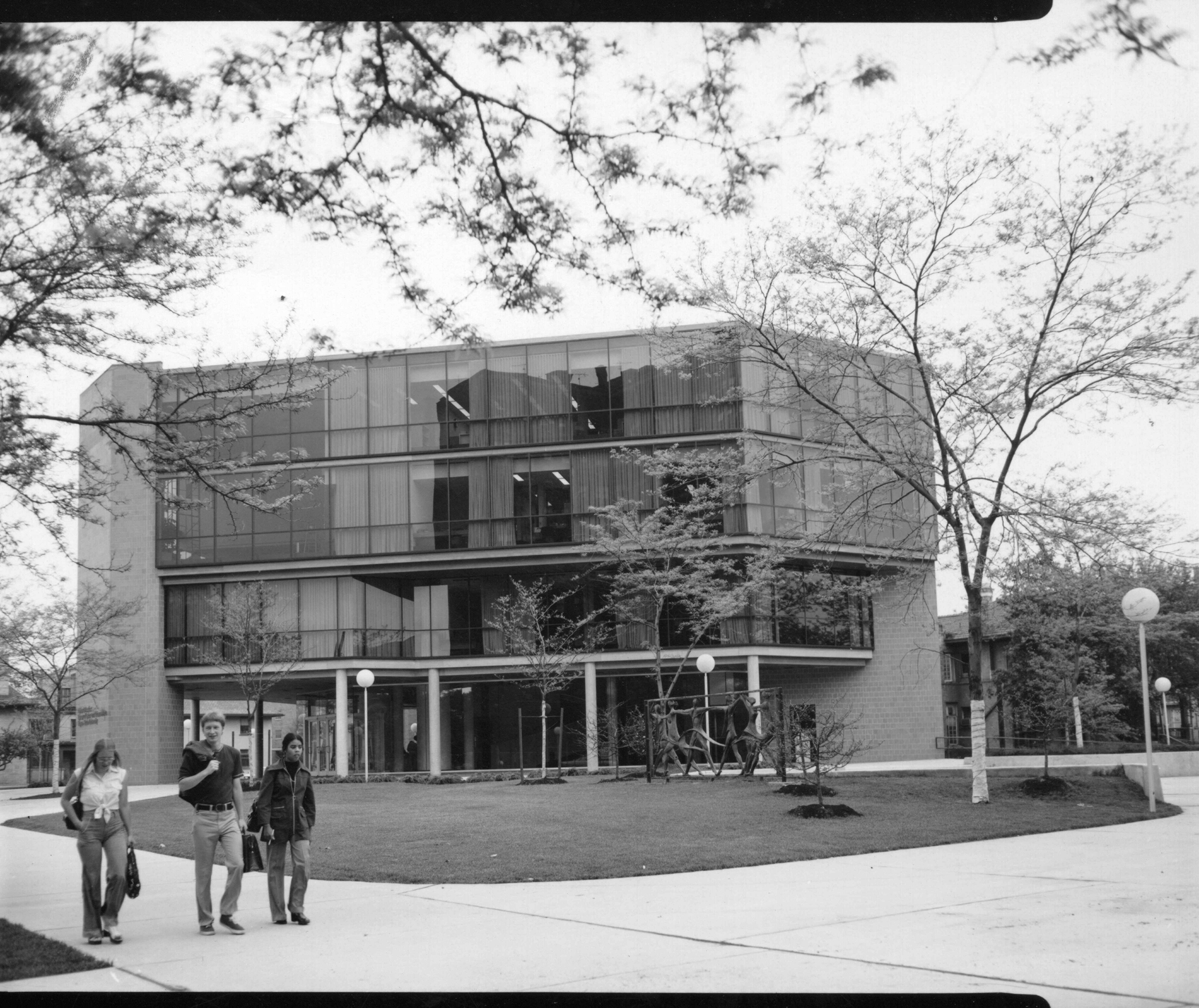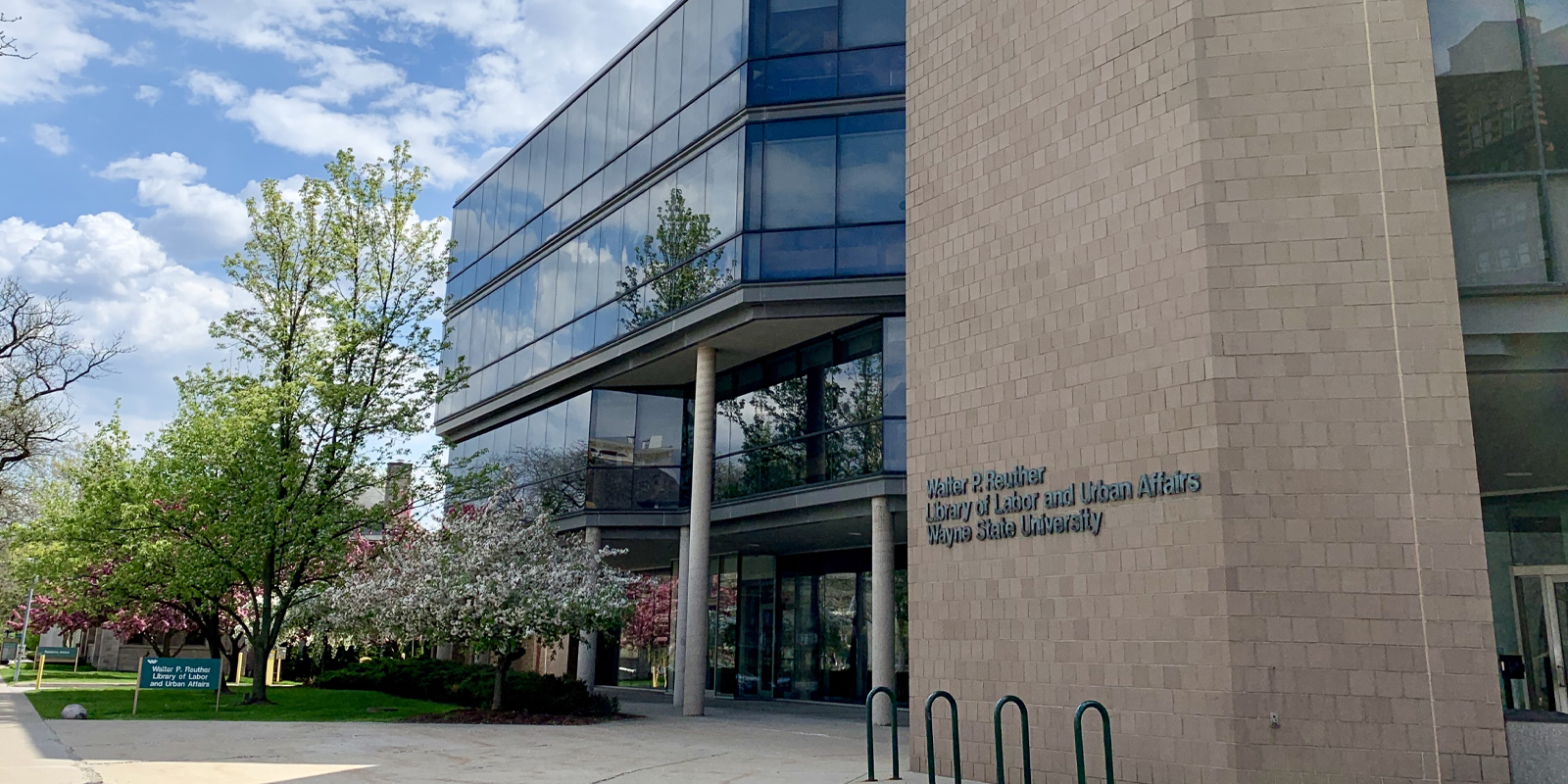
DETROIT – As Phil Mason stepped into the elevator at AFSCME headquarters, then-President Jerry Wurf stepped out and said to him, “What the hell are you doing here?”
“He exited before I had a chance to reply,” Mason later recalled.
It was the late 1970s, and Mason had been working with AFSCME since 1973. He was the founder of the Labor History Archives at Wayne State University in Detroit, which today is known as the Walter P. Reuther Library, Archives of Labor and Urban Affairs.
The building opened on May 23, 1975. This year marks a significant milestone for the archives as we celebrate 50 years in the building. The Reuther Library was the first archives building devoted to labor and it houses the largest collection in North America.
It is the home of AFSCME’s archives.
Our union’s archives contain official documents such as conference proceedings, executive board minutes, and AFSCME’s publications; records from AFSCME International like letters, memos, and reports on topics like organizing and bargaining activities; plus other paperwork. Together, these records tell the story of AFSCME’s 89 years, along with the stories of its councils, locals, and members.
A look back at AFSCME’s past
AFSCME’s origins date to 1932 with the Wisconsin State Employees Association (WSEA). The WSEA was formed by a group of state employees aiming to protect the civil service system from an incoming gubernatorial administration. The civil service system, as opposed to the spoils system, is one in which government jobs are filled based on a candidate’s merit and not their political loyalty.
After the WSEA successfully codified civil service in Wisconsin, it began expanding into other states. In 1936, the AFL chartered it as the American Federation of State, County and Municipal Employees.
In 1957, AFSCME moved its headquarters from Madison, Wisconsin, to Washington, D.C., where it has been ever since.
So how did AFSCME’s records end up in Detroit?
To answer that question, we first need to know how the Labor History Archives came to be. A combination of several factors created the perfect conditions: a growing interest in labor history and the 1953 establishment of the Labor History academic journal spawned public interest; an increased volume of paper records due to the invention of the copy machine left union offices overwhelmed; and a 1959 AFL-CIO convention resolution in support of archives encouraged unions to preserve their history.
The year 1960 was the perfect time for Mason to establish the Labor History Archives. He built relationships with labor leaders across the country, fostering trust for the program. Being in Detroit, he didn’t have to look far to find allies in the labor movement.
The first major union to deposit their records at the new archives was the United Auto Workers (UAW), headquartered a short distance from Wayne State University. UAW president Walter Reuther, who served from 1946-1970, supported Mason’s work, and they drummed up support within the auto union, which ultimately contributed funds for a dedicated archives building.
AFSCME partners with Wayne State University
Mason first connected with AFSCME as a consultant. He visited the Washington headquarters in 1973 to review many file cabinets of records, suggest improvements to the existing filing system, and make recommendations on what could be discarded and what had value for preservation in an archive.
By 1974, AFSCME decided to place their official archives with his program, and thus the records came to Detroit. The 1974 agreement, which still holds today, stipulated that AFSCME retain ownership of the records and that the collections be accessible to researchers, including AFSCME members.
In addition to AFSCME and the UAW, records from AFT, UFW, ALPA, SEIU, and other unions and labor-related organizations (plus university records and collections related to metropolitan Detroit) fill the Reuther Library’s 75,000 linear feet of storage space. Mason’s skill with relationships allowed him to build the archives from the ground up.
Mason later recalled, “Wurf was very upset when he learned that I had solicited the papers of his union opponents. He made his views clear to me several times.”
Wurf even banned him from AFSCME headquarters. About six months later, Mildred Wurf, Jerry Wurf’s wife, called Mason to invite him back to Washington. That’s when Mason received the not-so-warm welcome in the elevator.
Wurf and Mason eventually became friends. Mason was even invited to the Wurf home for dinners when he visited Washington. They stayed in touch until Jerry Wurf’s death in 1981.
Today, AFSCME’s partnership with Wayne State University and the Reuther Library continues. AFSCME’s archivist helps researchers connect with the records they need for many kinds of projects. Wherever a story can be told, archives can provide the evidence and inspiration.
Take a walk through AFSCME’s history
As AFSCME approaches its 90th anniversary, it’s a great time to learn more about its rich history.
Some of the collections include:
- Communications Department records: A source of photographs, press releases, AFSCME’s magazines, and video recordings.
- Organizing and Field Services records: Full of information on organizing, elections, bargaining, and strikes. It also contains an assortment of fliers and leaflets from affiliates across the country.
- Office of the President: Arnold Zander/Jerry Wurf/Gerald McEntee — The records of AFSCME’s first three presidents.
- Office of the Secretary-Treasurer: Gordon Chapman/Joseph Ames/William Lucy — The records of AFSCME’s three longest-serving secretaries-treasurer.
- Publications: From AFSCME International, including convention proceedings, and various councils and locals.
- Retiree Department records: Another source of great photographs, information on Social Security, Medicare, and all things retirement.
Feel free to contact me with any questions. AFSCME members are welcome to request a tour of the archives. And if you can’t make it in person, you can explore the records by browsing finding aids (detailed descriptions of the individual collections), photo galleries, blog posts, and online exhibits.
